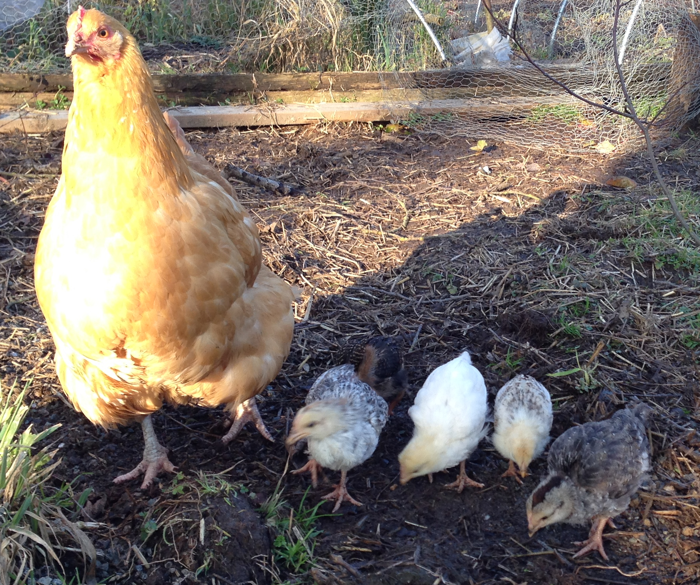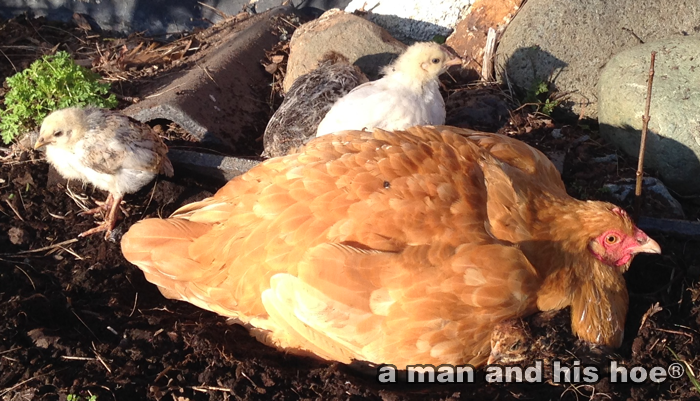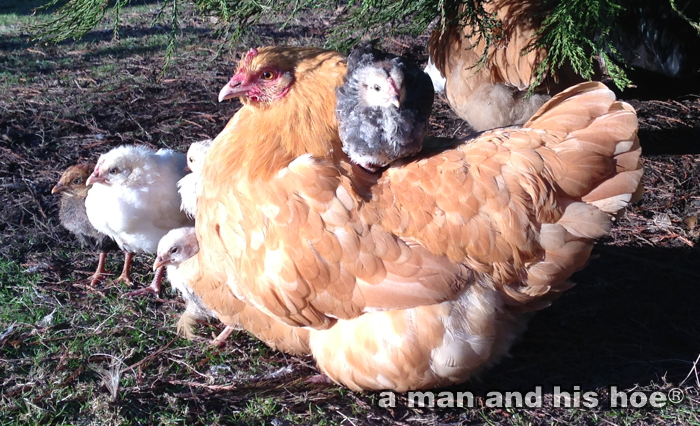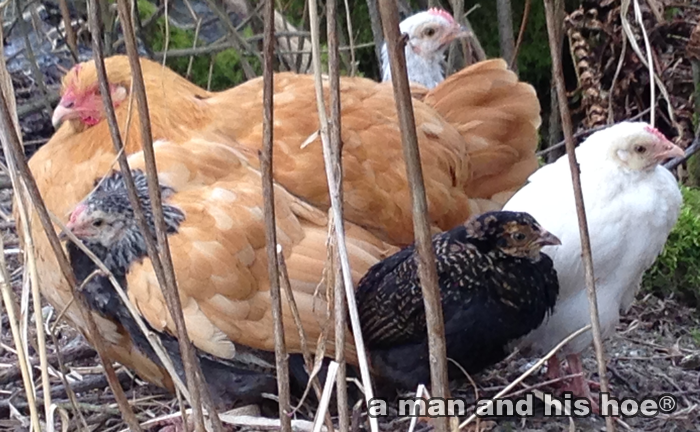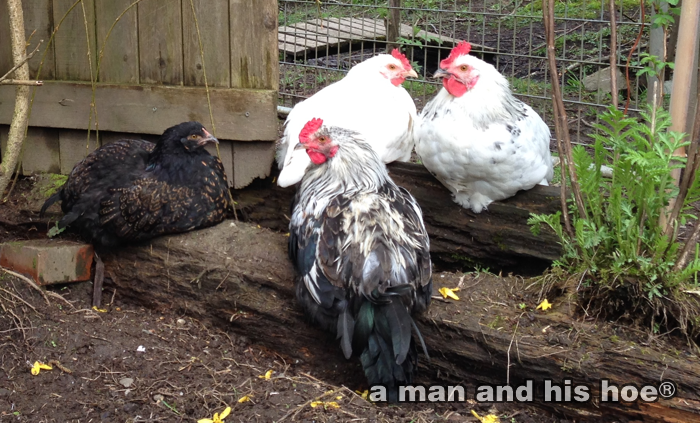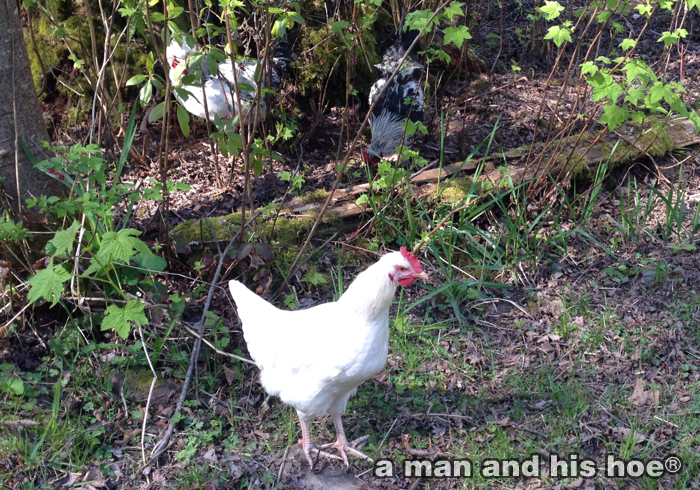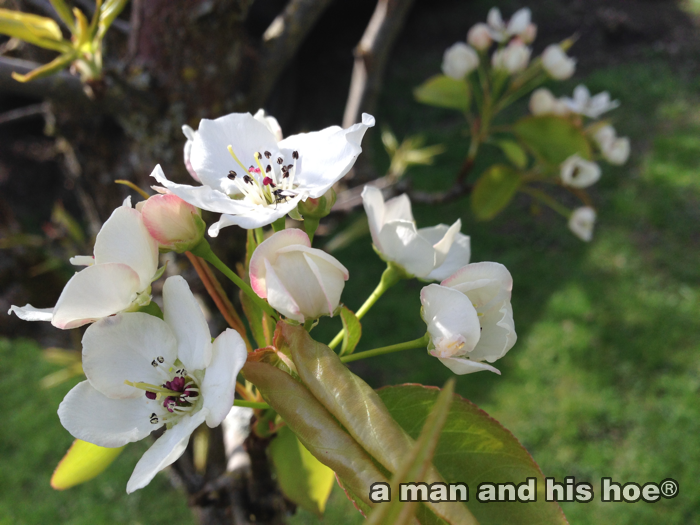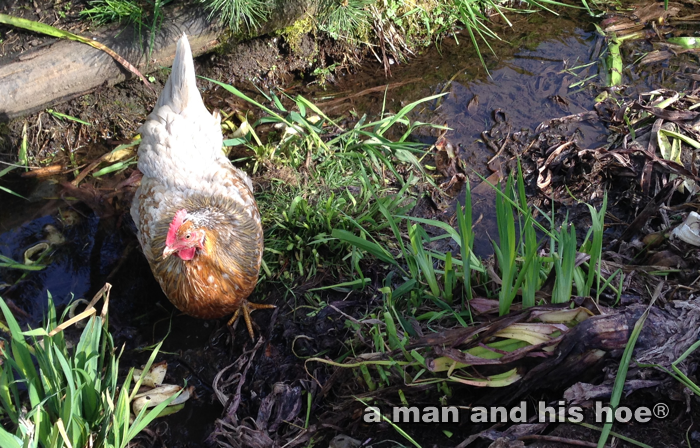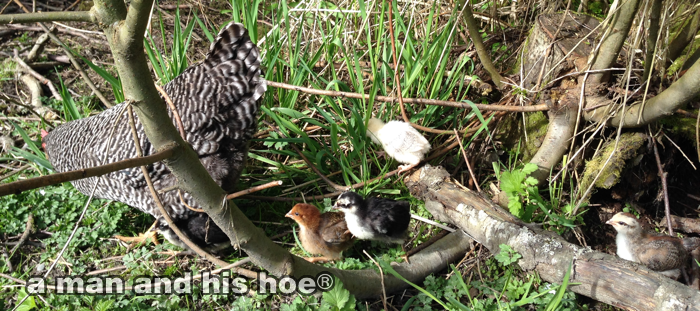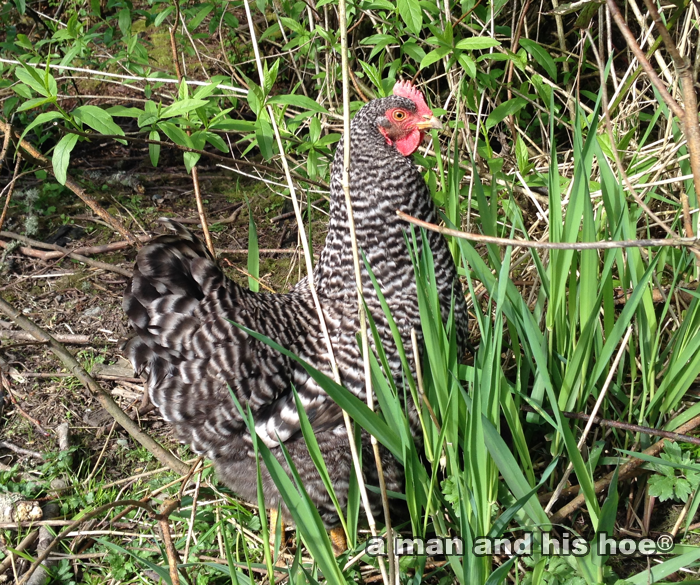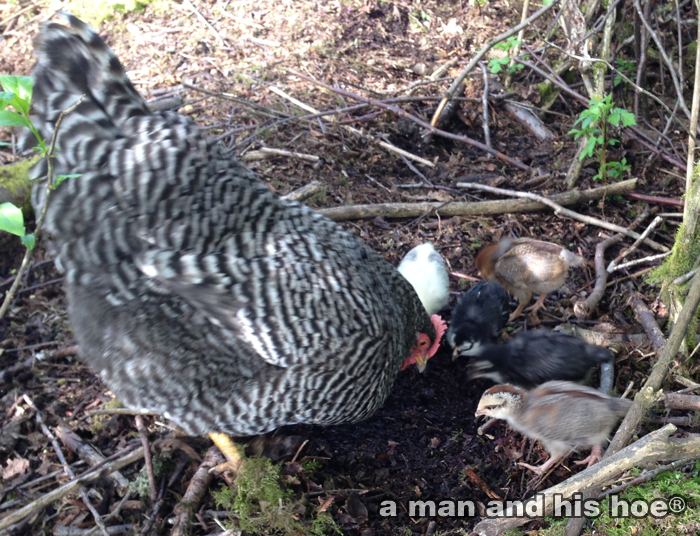Queen Imelda cuts a regal pose as she spends part of the afternoon with Billy. Always calm and collected, she lays an impressive egg. Each chicken is unique. Each one has a distinct personality. Each one lays a slightly different egg. Each time they lay an egg it is slightly different.






When you see the Certified Humane label on a carton of eggs, you may think that the hens which laid those eggs are running around on grass like Queen Imelda. Nothing could be farther from the truth. Certified Humane only requires hens to have 1 to 1.5 square feet per hen when laying hens are kept in laying houses. The requirement varies depending on whether the laying house has layers, perches, and roosts or not. You’ll find their space requirements on page 7 of Humane Farm Animal Care Animal Care Standards 2014 Standards for Egg Laying Hens.
This means that in a 30 by 100 foot laying house, a farmer could keep from 2,000 to 3,000 hens and still meet the Certified Humane standards. What organizations like Certified Humane are trying to do is noble, but just because something has a label saying it was raised humanely, doesn’t mean that it meets your definition of what you consider to be humane treatment. Look behind the label and find out exactly what that means.
I asked Certified Humane whether they allowed de-beaking and this is what they emailed me:
De-beaking is prohibited by our program. Our laying hen standards allow beak trimming if it occurs before 10 days of age, and here is the reasoning behind that:
In flocks of cage-free laying hens larger than 120 birds, there is a tendency towards feather pecking and cannibalism. Feather pecking is a natural behavior for birds (actually the source of the term “pecking order”), whereas cannibalism occurs when the birds attack another bird until it is dead. Most of the food production flocks are much larger than 120 birds, unless they are being raised by a backyard farmer or hobbyist.
Beak trimming is performed on birds prior to 10 days of age. Our scientific committee developed this standard as a way to combat cannibalism in cage-free flocks while minimizing discomfort for the birds. There have been studies done which show that trimming just the tip of the beak at that age causes only momentary discomfort, with no long-term discomfort or ill effects. The birds are still able to use their beak in a full range of natural behaviors.
In other words, they allow egg laying hens to be kept in flocks of such size and density, that the hens may cannibalize each other. So, in order to prevent this, they allow chicks up to 10 days old to have their beaks trimmed. In my view, a more humane method would be to research what maximum flock size and minimum housing density is required to keep cannibalization from happening in the first place. Of course, this would result in more expensive eggs, and so to keep the farmers happy and the consumers appeased with being able to purchase inexpensive eggs with “humanely raised” labels, the less expensive method has been approved.
I understand why Certified Humane has gone this way. At the same time, I feel you have a right to know what it is you are buying when you purchase eggs with their label on them.




